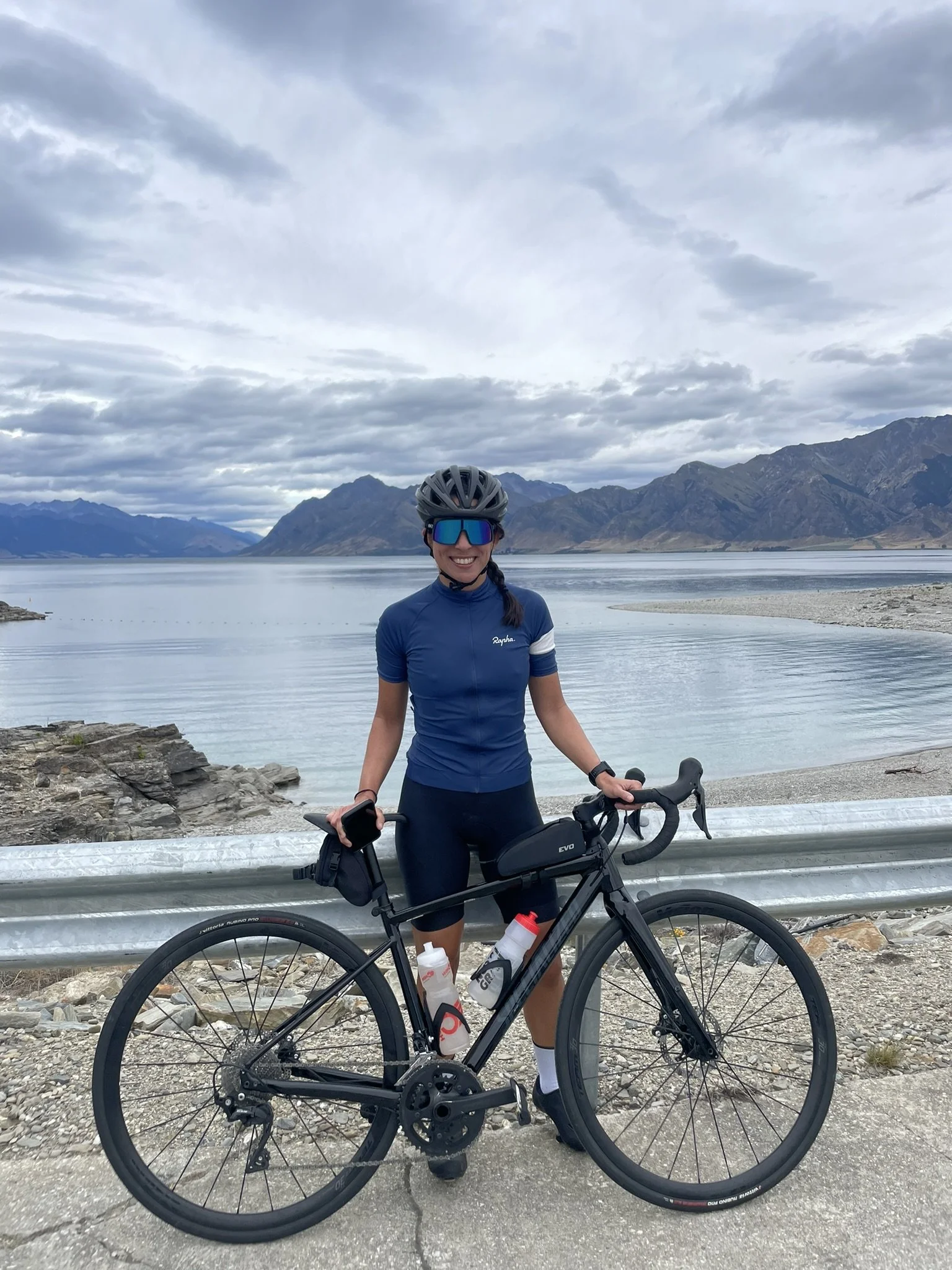What You Need to Know When Buying a Bike
Your guide to making a smart and confident choice
Buying a bike for triathlon can feel a bit like entering a new language: aero bars, carbon frames, gear ratios, rim brakes vs. disc brakes… and why does that one cost more than your first car?
Whether you’re shopping for your first ride or looking to upgrade, here’s everything you need to know to make a smart purchase that suits your goals, your budget, and your lifestyle.
First, What Type of Bike Do You Need?
There are three main categories to consider:
1. Road Bike
Great for beginners, group rides, and general training
More versatile and comfortable
Can be raced in triathlons (add clip-on aero bars)
2. Triathlon/Time Trial (TT) Bike
Designed for aero efficiency and speed
Aggressive position (less comfy for beginners)
Ideal for long-distance triathlons or serious racers
3. Gravel/Hybrid/Other
Usually not ideal for triathlon unless you're doing off-road events or just looking for a multi-purpose bike.
Not sure? Start with a road bike—it’s more adaptable and easier to handle.
Budget: What Should You Spend?
Let’s keep it real: bikes aren’t cheap. But that doesn’t mean you have to spend $10K to get started.
<$2000: Alloy frame, entry-level components, very raceable
$2,000-6,000: Carbon frame, mid-tier groupset, solid wheels
$6,000+: Aero features, high-end components, lighter weight
You can absolutely complete your first triathlon on a budget-friendly road bike. Focus on fit and comfort first then speed will follow.
Fit Is Everything
The best bike in the world is useless if it doesn’t fit you properly.
Get a professional bike fit before or after purchase
A good fit improves comfort, efficiency, and reduces injury risk
Fit can often be adjusted with saddle height, stem length, or handlebar setup
Top tip: If you're between sizes, always go for the smaller frame. It's easier to adjust up than down.
Key Components to Consider
You’ll hear a lot of talk about components. Here’s what matters most:
Frame Material:
Aluminium: Affordable, durable, slightly heavier
Carbon: Lighter, stiffer, absorbs road vibration (but pricier)
Groupset (gears, cranks and brakes):
Shimano 105 or SRAM Rival and above = reliable for racing
Electronic shifting (e.g. Di2) is smooth and sexy but not essential
Wheels:
Deeper rims = more aerodynamic, but heavier and pricier
You can always upgrade later, start with a solid set and build from there
Brakes:
Disc brakes are now the standard: better in all conditions
Rim brakes are fine (especially on used bikes) and easier to maintain
New vs. Used
Buying used can be a great way to get more bike for your buck but it comes with caveats.
✅ Used Pros:
Cheaper
Might get higher-end components for less
❌ Used Cons:
Risk of hidden damage
Might need immediate upgrades (e.g., new chain, tires, cables)
👀 If buying secondhand, always check:
Frame for cracks
Brake and gear function
Drivetrain wear (ask how many kms it's done)
Whether it’s had a recent service
Ask a professional to inspect it
Bonus: Triathlon-Specific Features
If you're leaning toward a TT or tri bike, look for:
Integrated hydration and storage
Aero handlebars and extensions
Geometry designed for long-course triathlon riding
But remember: a road bike with clip-ons can get you very far. Many age groupers race on road bikes with excellent results.
Final Thoughts
Your first or next triathlon bike should fit your body, your budget, and your goals. Don’t stress about getting the “perfect” bike, the best bike is the one you enjoy riding and can train consistently on.
At Hive Endurance, we’re happy to help athletes navigate the bike-buying journey, from choosing the right style to recommending fits and upgrades. If you’re unsure, reach out. We’ve helped plenty of people find their dream setup without wasting money on the wrong one.


